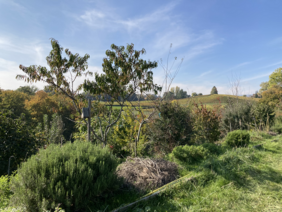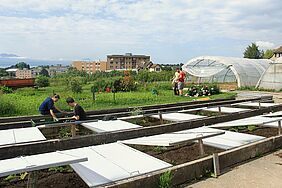For about five years now, the phenomenon of "microfermes", micro farms in English, has been gaining ground in Romandy, the French-speaking part of western Switzerland. Vaud was the first canton to respond to the movement and, together with FiBL, launched a project aimed at studying the phenomenon and supporting the farms.
Characteristics of micro farms
So what are "microfermes"? There is no generally accepted definition. Holding sizes range from 0.15 to five or six hectares. Because the farms are small, they often use "intensive" alternative forms of production such as permaculture, agroforestry systems or mixed cropping. Other characteristics are as follows: The initiators or entities behind micro farms often come from non-agricultural backgrounds, and about half of them have no formal agricultural training. They strive for a high level of autonomy and pay particular attention to resource conservation; the vast majority are organic producers, but only a small proportion hold organic certification. Their farm machinery tends to be small in size if they use any at all, and they often keep small livestock such as chickens, ducks or goats. Generally they not only want to be self-sufficient, but also sell farm products. Currently there are about 50 micro farms in Romandy. Those who wish to set up a micro farm are usually faced with the following questions: How do I get access to land? What financing options are there? What training and further education do I need? How do I develop a business model? What are the farming techniques I can use and which ones do I want to use? The Microfermes project was able to build on the successful BioDiVerger trial: low-input orchards set up with FiBL support on the grounds of the Marcelin education centre in Morges. BioDiVerger has shown that silvo-arable vegetable production can be an economically successful venture on as little as half a hectare.
Networking, courses, fact sheets and an educational trail
As part of the project, the Microfermes and Permaculture Interest Group was established which counts 110 members to date, about half of whom are already active as "micro farmers". Experience is shared in this network and members give each other mutual support. FiBL and Agridea have developed and run courses on the economic aspects. An information booklet on training courses open to micro farm operators has been published and leaflets and online publications are in preparation. They should be available by mid-2021. By then we also expect to be able to open the thematic educational trail in the Marcelin grounds in Morges.
Further information
Contact
Hélène Bougouin
Links
- fibl.org: Acitivity report
- fibl.org: Project microfermes
- fibl.org: Setting up a micro farm in the canton of Vaud (in French)





